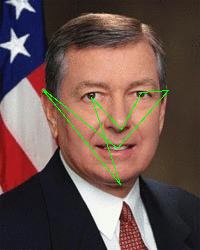
A simple biometric system translates a human image into a polygon by considering certain features (eyes, nose, ears, etc.) to be vertices and connecting them with line segments. The polygon has distinct vertices but may be degenerate in that the line segments could intersect. Because these polygons are generally created from remote images, there is some uncertainty as to their scale and rotation. Your job is to determine whether or not two polygons are similar; that is, can they be made equal by repositioning, rotating and magnifying them?
Input consists of several test cases. Each test case consists of three lines containing:
For each case, output a line "similar" or "dissimilar" as appropriate. The two polygons are similar if, after some combination of translation, rotation, and scaling (but not reflection) both vertices corresponding to each feature are in the same position.
4 0 0 0 1 1 1 1 0 0 1 1 0 0 -1 -1 0 3 0 0 10 0 10 10 0 0 -10 0 -10 10 3 0 0 10 10 20 20 0 0 11 11 22 22 3 0 0 10 10 20 20 0 0 11 11 20 20 0
similar dissimilar similar dissimilar
